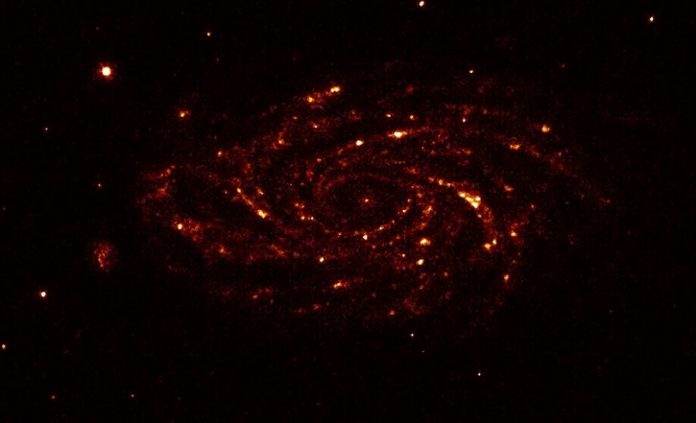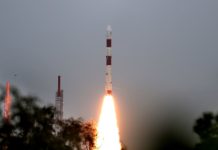India’s space telescope AstroSat has succeeded in measuring X-ray polarization of the Crab Nebula’s pulsar, producing data that might challenge scientists’ understanding of supernovae and their magnetic fields.
The results, published on 6 November 2017 in Nature Astronomy, came from a study of the pulsar’s X-ray emissions during its different rotation phases. Using AstroSat’s CZT Imager (CZTI), scientists found that X-rays were emitted an unexpected times, i.e., during the pulsar’s “off-pulse” period. This may have tremendous implications not only in the current understanding the Crab Nebula, but also in the understanding of gravity, magnetic fields, and the curvature of space.
Other than gaining insight into X-ray polarization, this discovery also demonstrates CZTI’s extreme sensitivity. According to India’s space agency ISRO, CZTI “has performed the most sensitive measurement of the X-ray polarization of the Crab pulsar”, something that NASA’s upcoming space telescope PRAXyS will also seek to do.
CZTI was a collaborative effort between ISRO, research institutes and the private sector in India. Using a semiconductor known as Cadmium Zinc Telluride (from which it derives its name), the instrument consists of pixels that can detect high-energy X-rays and measure photon energy. However, CZTI’s data had to be combined with data from the ground-based Indian Giant Meter-wave Radio Telescope (GMRT) for better accuracy.
Said Prof. A. R. Rao of TIFR, Principal Investigator of CZTI, ““Even the brightest sources in the sky give us very few X-ray photons. We had to observe the Crab pulsar many times, and combine data taken many months apart – a major challenge, given the very small rotation period of the pulsar.”







